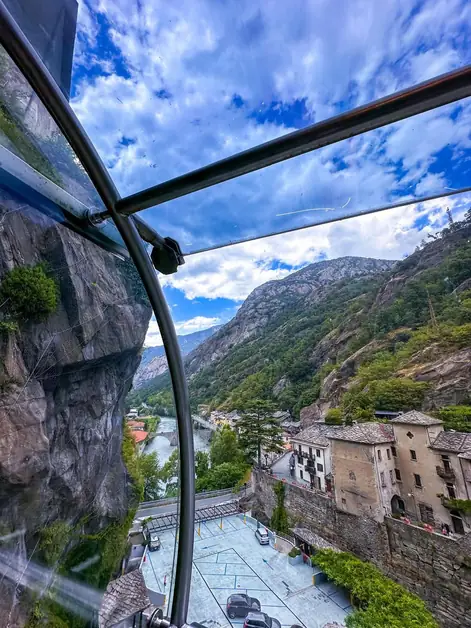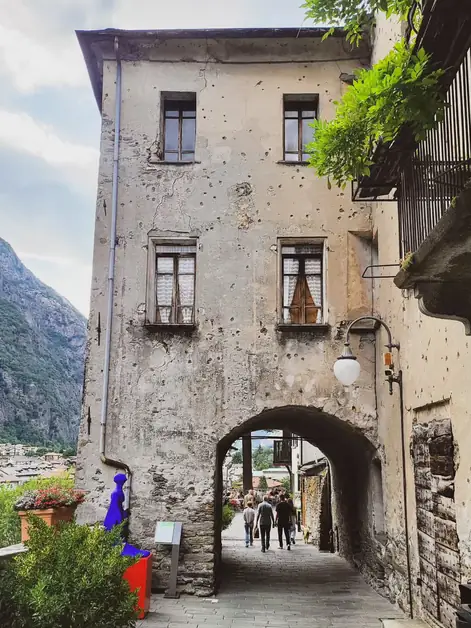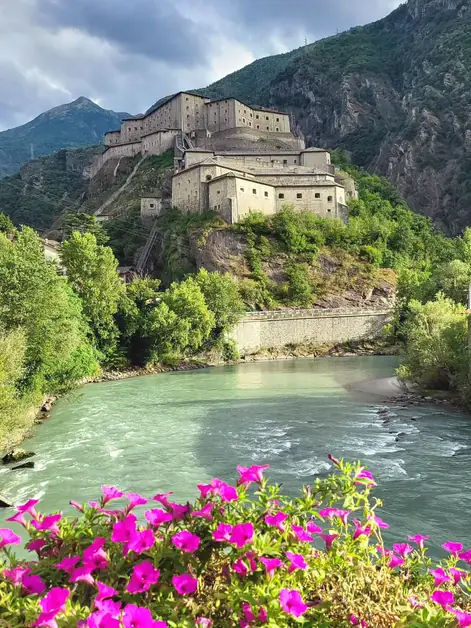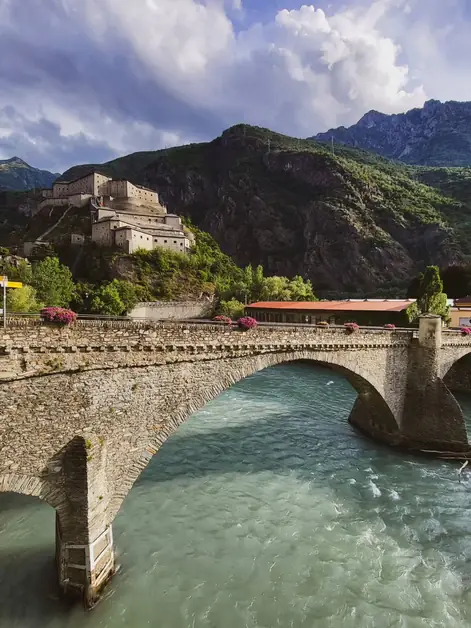Explore the Ussel Castle in Aosta Valley
Visit Ussel Castle and discover its unique history.
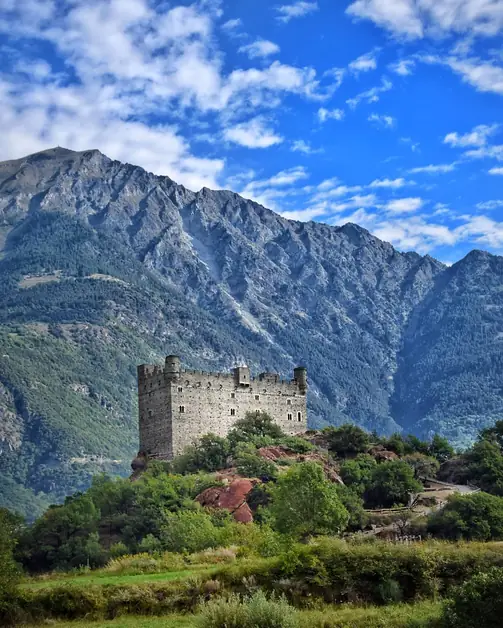
Where is the Ussel Castle located in Aosta Valley?
The Ussel Castle is located in the municipality of Châtillon, along the middle Aosta Valley. Its panoramic position allows visitors to admire the central valley and the surrounding peaks. It is one of the most recognizable castles in the region due to its compact structure and its location on a reddish rock promontory that stands out among the woods.
How to reach Ussel Castle by car?
Getting to Ussel Castle by car is easy. From Aosta, take the A5 motorway to the Châtillon/Saint-Vincent exit. Once you exit, follow the signs for Châtillon and then for the castle. The road narrows as you approach, leading to a small parking area located a short distance from the path that leads to the fortress. On busy days, finding a parking spot can be difficult, so it is advisable to arrive early in the morning or late in the afternoon. Alternatively, you can leave your car in the center of Châtillon and walk up.
Can you reach Ussel Castle by public transport?
Yes, but it requires some planning. From the Châtillon train station, well connected to Aosta and Turin, you can walk to the town center. From there, a path leads to the castle with a walk of about 30–40 minutes uphill. There are no direct buses to the fortress, so the final stretch must be walked. This makes the arrival slower but also more evocative, as you gradually ascend and see the castle appear above the woods.
How long does the walk to Ussel Castle take?
From the parking area near the promontory, the path is short: it takes about 10–15 minutes of walking to reach the entrance. If you start from Châtillon center, the climb takes about half an hour. The route is simple, but the slope can be felt, especially in the warmer months. It is worth stopping along the way to admire the view of the valley and observe the unique colors of the rock that hosts the castle.
What impression does seeing Ussel Castle up close give?
As you approach, the castle appears as a large compact quadrangular mass, with corner towers that give it a military fortress appearance. It lacks refined gardens or elegant decorations: its impressiveness comes from simplicity. The gray stone of the walls contrasts with the green of the woods and the red of the ground, creating a strong, almost austere image. Looking up, the walls still seem to watch over the valley as they did in the Middle Ages.
What does it feel like to enter Ussel Castle?
When the castle is open for visits, the interior surprises with its essentiality. The rooms are bare, but the strong walls tell stories of centuries past. Walking through the corridors, one can perceive the original function of defense and territorial control. Occasionally, temporary exhibitions and cultural events are organized, making the visit even more interesting. Even without furnishings, the atmosphere is intense and evocative.
What is the view from Ussel Castle?
From the windows and walkways, one enjoys a wide panorama of the central valley. You can see the cultivated slopes, scattered villages, and the mountains that frame the scene. On clear days, the blue sky and the running clouds create a spectacular contrast with the rocks of the valley. It is an ideal spot for photography enthusiasts: the morning and late afternoon light enhances the colors and shadows of the landscape.
Why is Ussel Castle special compared to other castles in Aosta Valley?
Unlike other fortresses in the region, often rich in decorations and subsequent transformations, Ussel Castle has remained faithful to its original structure. It is one of the first examples of a monolithic castle built in Aosta Valley in the 14th century. This makes it unique, as it allows for a better understanding of the evolution of medieval defensive architecture in the area. Walking around the walls, one can clearly perceive its function as a stronghold.
What is the best time to visit Ussel Castle?
Every season has its charm. In spring, the surrounding woods fill with colors, and the fresh green enhances the gray stone of the walls. In summer, the climb can be warmer, but the clear sky offers spectacular views. Autumn brings warm hues that make the castle even more scenic. In winter, with snow on the mountains behind, the fortress appears even more imposing and solitary.
